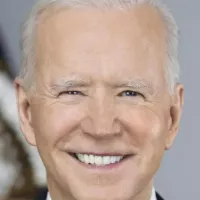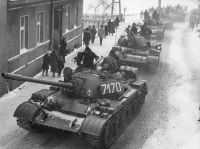Taiwan, officially the Republic of China (ROC), is a country in East Asia situated between the East and South China Seas. Its main island, Formosa, is positioned northwest of the People's Republic of China, northeast of Japan, and south of the Philippines. Taiwan's geography is dominated by mountains in the east and plains in the west, where the majority of its urbanized population resides. The ROC controls 168 islands, with a combined area of 36,193 square kilometers. Taipei, New Taipei City, and Keelung form its largest metropolitan area. Taiwan is densely populated, with approximately 23.9 million inhabitants.
1902: Bandit-rebels killed
From 1898 to 1902, around 12,000 "bandit-rebels" were killed.
1905: Tongmenghui party manifesto
In 1905, the Tongmenghui's party manifesto outlined the four goals of the Chinese revolution: to expel the Manchu rulers, to revive Chunghwa, to establish a Republic, and to distribute land equally among the people.
1907: Beipu uprising
In 1907, the Beipu uprising demonstrated opposition to Japanese rule.
1911: Xinhai Revolution
While Taiwan was under Japanese rule, the Xinhai Revolution happened in 1911.
January 1912: Republic of China founded
On January 1912, the Republic of China was founded on mainland China following the Xinhai Revolution of 1911.
1912: Overthrow of the Qing Dynasty
In 1912, the Republic of China overthrew the Qing Dynasty under the leadership of Sun Yat-sen.
1912: Establishment of the Republic of China
On January 1912, shortly after the ROC's establishment on the Chinese mainland, the government used the short form "China" to refer to itself.
1912: Start of the Minguo era
The Minguo era system, which starts in 1912, the year the ROC was founded, is often used to denote the year.
1915: Tapani incident
In 1915, the Tapani incident demonstrated opposition to Japanese rule.
1915: Warlordism
While Taiwan was under Japanese rule, there was warlordism from 1915-28.
1924: Establishment of the National Revolutionary Army
In 1924, Sun Yat-sen established the National Revolutionary Army in Guangdong with a goal of reunifying China under the Kuomintang.
1927: Chinese Civil War
While Taiwan was under Japanese rule, the Chinese Civil War happened from 1927-49.
1928: Kuomintang leads to diplomatic recognition of the Republic of China
In 1928, the defeat of the Peiyang Government by the Kuomintang (KMT) led to widespread diplomatic recognition of the Republic of China.
1929: Standardization of date format
Prior to standardization in 1929, the Chinese calendar was officially used.
1930: Musha Incident
In 1930, Japanese authorities engaged in bloody campaigns against the Indigenous people residing in mountainous regions, culminating in the Musha Incident.
1935: Japanese assimilation project
Around 1935, the Japanese began an island-wide assimilation project, abolishing Chinese-language newspapers and curriculums and outlawing Taiwanese music and theater.
1937: Japanese invasion
While Taiwan was under Japanese rule, there was Japanese invasion from 1937-45.
1938: Japanese residing in Taiwan
By 1938, 309,000 Japanese were residing in Taiwan.
1939: Taiwan was the seventh-greatest sugar producer in the world
By 1939, Taiwan was the seventh-greatest sugar producer in the world.
1940: Adoption of Japanese surnames
Starting from 1940, families were required to adopt Japanese surnames, although only 2% had done so by 1943.
1943: Adoption of Japanese surnames
Starting from 1940, families were required to adopt Japanese surnames, although only 2% had done so by 1943.
October 1944: Formosa Air Battle
In October 1944, the Formosa Air Battle was fought between American carriers and Japanese forces in Taiwan.
1945: Sino-Soviet Treaty
The ROC recognized Mongolia as an independent country in 1946 after signing the 1945 Sino-Soviet Treaty of Friendship and Alliance.
1945: Hyperinflation of 1945
The hyperinflation of 1945 contributed to growing dissatisfaction on Taiwan.
1946: Recognition of Mongolia
The ROC recognized Mongolia as an independent country in 1946.
February 1947: February 28 Incident
On 28 February 1947, the shooting of a civilian triggered island-wide unrest, which was suppressed with military force in what is now called the February 28 Incident.
1947: ROC Armed Forces established
In 1947, the Constitution of the ROC reformed the National Revolutionary Army into the Republic of China Armed Forces.
1947: 1947 constitution defines ROC territory
In 1947, the constitution defined the territory of the ROC according to its "existing national boundaries". The ROC is divided into provinces, special municipalities, and the province-level Tibet Area.
1947: National boundaries in the 1947 Constitution
National boundaries were not explicitly prescribed by the 1947 Constitution.
1947: Constitution of the ROC
The government of the Republic of China was founded on the 1947 Constitution of the ROC and its Three Principles of the People.
May 1949: Martial law declared
In May 1949, martial law was declared on Taiwan.
December 1949: Nationalist government evacuated to Taiwan
On 7 December 1949, Chiang Kai-Shek evacuated his Nationalist government to Taiwan and made Taipei the temporary capital of the ROC.
1949: ROC retained control of Taiwan and Penghu
After losing control of mainland China in 1949, the ROC retained control of Taiwan and Penghu, parts of Fujian, and two major islands in the South China Sea.
1949: Retreat to Taiwan
After retreating to Taiwan in 1949, the ROC reneged on its recognition of Mongolia.
1949: Taiwanese military aims to retake mainland China
From 1949 to the 1970s, the primary mission of the Taiwanese military was to "retake mainland China" through Project National Glory.
1949: Government moved to Taiwan
In 1949, due to the loss of mainland China to the Communists in the Chinese Civil War, the Republic of China government moved to Taiwan under the Kuomintang (KMT).
1949: PRC claims Taiwan is Chinese territory
In 1949, the People's Republic of China (PRC) claims that Taiwan is Chinese territory and that the PRC replaced the ROC government, becoming the sole legal government of China.
1949: Hyperinflation of 1949
The hyperinflation of 1949 contributed to growing dissatisfaction on Taiwan.
1950: Communists captured Hainan
In 1950, the Communists captured Hainan.
1950: United Kingdom recognizes the PRC
In 1950, the United Kingdom recognized the PRC.
1951: Agriculture Percentage of GDP
In 1951, agriculture constituted 32 percent of Taiwan's GDP.
1951: US Aid to KMT Regime
In 1951, the United States began granting substantial foreign aid to the KMT regime.
1952: Price Stabilization
By 1952, US foreign aid had stabilized prices in Taiwan.
1954: US-Taiwan mutual defense treaty
From 1954, the United States was a partner with Taiwan in a mutual defense treaty.
1954: Signing of the Sino-American Mutual Defense Treaty
In 1954, the Republic of China (ROC) and the United States signed the Sino-American Mutual Defense Treaty and established the United States Taiwan Defense Command.
1955: Formosa Resolution
In 1955, the United States passed the Formosa Resolution, granting substantial foreign aid to the KMT regime.
1955: Dachen Islands and Yijiangshan Islands captured
The Communists captured the Dachen Islands and Yijiangshan Islands during the First Taiwan Strait Crisis in 1955.
1958: Second Taiwan Strait Crisis
During the Second Taiwan Strait Crisis in 1958, Nike Hercules missiles were added to missile batteries throughout the island.
1958: ROC revolts in Northwest China defeated
In 1958, the ROC revolts in Northwest China were defeated.
1959: Agricultural Production Increase
From 1952 to 1959, agricultural production increased at an average annual rate of 4 percent due to land reform and agricultural development programs.
1961: ROC forces defeated by Communists
ROC forces entered Burma and Thailand in the 1950s and were defeated by Communists in 1961.
1962: Golden Horse Film Festival and Awards
Taiwan has hosted the Golden Horse Film Festival and Awards since 1962.
1965: End of US Aid
In 1965, the period of substantial US foreign aid to the KMT regime ended.
1966: Introduction of Taekwondo to Taiwan
In 1966, Taekwondo was introduced to Taiwan for military training and has become a successful combat sport.
October 1971: UN Resolution 2758
On 25 October 1971, UN Resolution 2758 was adopted, recognizing the PRC as China's sole representative in the United Nations.
1971: UN members voted to recognize the PRC instead of the ROC
In 1971, United Nations members voted to recognize the People's Republic of China (PRC) instead of the Republic of China (ROC).
1971: ROC expelled from United Nations
In 1971, the ROC was expelled from the United Nations by Resolution 2758 and replaced with the PRC.
1972: Chiang Ching-kuo as Premier
In 1972, Chiang Ching-kuo became the premier of Taiwan.
1978: Chiang Ching-kuo as President
In 1978, Chiang Ching-kuo rose to the presidency.
1978: Overseas Investment
In 1978, tax incentives and a cheap labor force attracted investments of over $1.9 billion from overseas Chinese, the United States, and Japan.
1979: Kaohsiung Incident
In 1979, the Kaohsiung Incident took place in Kaohsiung on Human Rights Day, uniting Taiwan's opposition.
1979: Nagoya Resolution
In 1979, the Nagoya Resolution approved by the International Olympic Committee (IOC) provided a compromise for the ROC to use the name "Chinese Taipei" in international events where the PRC is also a party.
1979: US Diplomatic Relations with the PRC
In 1979, the United States established diplomatic relations with the People's Republic of China (PRC), leading to the withdrawal of approximately 30,000 US troops stationed in Taiwan.
1979: Taiwan Relations Act
In 1979, the United States passed the Taiwan Relations Act, continuing to sell arms and provide military training to the Republic of China Armed Forces.
1980: Foreign Trade
By 1980, Taiwan's foreign trade reached $39 billion per year and generated a surplus of $46.5 million.
1984: Lee Teng-hui as Vice-President
In 1984, Chiang Ching-kuo selected Lee Teng-hui as his vice-president.
1986: Founding of DPP
In 1986, the Democratic Progressive Party (DPP) was founded as the first opposition party in Taiwan. Chiang Ching-kuo then announced that he would allow the formation of new parties.
February 1987: Founding of TSMC
On February 21, 1987, Taiwan Semiconductor Manufacturing Co. (TSMC) was founded.
July 1987: End of Martial Law
On 15 July 1987, Chiang Ching-kuo lifted martial law on the main island of Taiwan.
1987: Martial law lifted
In 1987, martial law, declared on Taiwan in May 1949, was lifted.
1987: End of Martial Law
Political reforms beginning in the late 1970s resulted in the end of martial law in 1987, and Taiwan transformed into a multiparty democracy in the early 1990s.
1988: Lee Teng-hui as President
After Chiang Ching-kuo's death in 1988, Lee Teng-hui became the first president of the ROC born in Taiwan.
1989: Founding of the Chinese Professional Baseball League (CPBL)
Professional baseball in Taiwan started with the founding of the Chinese Professional Baseball League (CPBL) in 1989.
1991: Taiwanese Investment in China Begins
From 1991 to 2022, more than US$200 billion has been invested in China by Taiwanese companies.
1991: ROC acknowledged the CCP control over mainland China
In 1991, the Republic of China ceased to regard the Chinese Communist Party as a rebellious group and acknowledged its control over mainland China.
1991: Establishment of SEF and ARATS
In 1991, the Straits Exchange Foundation (SEF) of Taiwan and the Association for Relations Across the Taiwan Straits (ARATS) of the PRC, were both founded as private organizations to conduct exchanges.
1991: ROC joins APEC as Chinese Taipei
Since 1991, the ROC participates in the Asia-Pacific Economic Cooperation forum (APEC) under the name "Chinese Taipei".
1991: ROC joins UNPO
Since the foundation of the organization in 1991, the Republic of China has been a member of the Unrepresented Nations and Peoples Organization (UNPO), represented by the Taiwan Foundation for Democracy (TFD) under the name "Taiwan".
November 1992: ARATS and SEF meeting results in 1992 Consensus
In November 1992, the ARATS and SEF held a meeting which would later become known as the 1992 Consensus.
1992: Identification survey results
In 1992, 17.6 percent of respondents identified as Taiwanese, 25.5 percent as Chinese, 46.4 percent as both.
1992: Pan-Blue Coalition supports 1992 Consensus
In 1992, the Pan-Blue Coalition generally supported the spirit of the 1992 Consensus, where the KMT claimed that there is one China, but that the ROC and PRC have different interpretations of what "China" means.
1993: Constitutional Court interpretation
In 1993, the Constitutional Court declined to define national boundaries.
1993: ROC petitions UN for entry
Since 1993, the ROC has petitioned the UN for entry, but its applications have not made it past committee stage.
1993: Establishment of Constitutional Court
The Constitutional Court was established in 1993 to resolve constitutional disputes, regulate the activities of political parties and accelerate the democratization process.
1994: Rise of pro-independence sentiment
Since 1994, pro-independence sentiment in Taiwan has steadily risen.
1995: National Health Insurance Instituted
In 1995, Taiwan's current healthcare system, known as National Health Insurance (NHI), was instituted.
1996: Lee Teng-hui Reelected
In 1996, Lee Teng-hui was re-elected in the first direct presidential election.
1996: Democratically elected presidents beginning
In 1996, democratically elected presidents began serving in the Republic of China, marking a significant step in the ROC's transition to a multi-party democracy.
1996: Joint Declaration on Security between US and Japan
In 1996, the joint declaration on security between the US and Japan was signed, which may imply Japan would be involved in any response to an attack on Taiwan.
1996: University Acceptance Rate
In 1996, the university acceptance rate was 49 percent in Taiwan.
1997: ROC seeks participation in WHO
Since 1997, the ROC government sought to participate in the World Health Organization (WHO), but their efforts were rejected.
1997: Force reduction plans begin
The ROC began a series of force reduction plans since the 1990s to scale down its military from a level of 450,000 in 1997 to 380,000 in 2001.
September 1999: 921 Earthquake
On 21 September 1999, a 7.3 quake known as the "921 earthquake" killed more than 2,400 people.
1999: Defense spending falls below 3% of GDP
Taiwan's defense spending as a percentage of its GDP fell below three percent in 1999.
2000: Chen Shui-bian Elected President
In 2000, Chen Shui-bian of the DPP was elected as the first non-KMT president.
2001: Agriculture Percentage of GDP
Since 2001, agriculture constituted less than 2 percent of Taiwan's GDP, decreasing from 32 percent in 1951.
2001: Force reduction continues
The ROC began a series of force reduction plans since the 1990s to scale down its military from a level of 450,000 in 1997 to 380,000 in 2001.
2002: "One Country on Each Side"
In 2002, Chen Shui-bian's reference to "One Country on Each Side" of the Taiwan Strait undercut cross-Strait relations.
2002: China Surpasses US as Taiwan's Largest Export Market
In 2002, China surpassed the United States to become Taiwan's largest export market for the first time.
2002: NHI changes payment system
In 2002, the National Health Insurance (NHI) in Taiwan changed its payment system from fee-for-service to a global budget due to increasing losses and the need for cost containment.
2002: Acceptance of Mongolian Passport
In 2002, the ROC began to accept the Mongolian passport and removed clauses referring to Outer Mongolia.
2002: ROC joins WTO as Separate Customs Territory
Since 2002, the ROC participates in the World Trade Organization (WTO) under the name "Separate Customs Territory of Taiwan, Penghu, Kinmen and Matsu".
March 2003: SARS outbreak in Taiwan
In March 2003, Taiwan experienced a SARS outbreak with 347 confirmed cases. The Taiwan Centers for Disease Control (CDC) and local governments established monitoring stations in public areas.
July 2003: SARS contained in Taiwan
In July 2003, Taiwan achieved full containment of SARS, and no cases have been reported since.
2003: Super Basketball League (SBL) in play
A semi-professional Super Basketball League (SBL) has also been in play since 2003.
2003: US treats Taiwan as a major non-NATO ally
Since at least 2003, the United States has de facto treated Taiwan as a major non-NATO ally.
2004: NHI Population Coverage
By the end of 2004, the population coverage of Taiwan's National Health Insurance (NHI) had reached 99 percent.
2004: Establishment of National Health Command Center
In 2004, Taiwan established the National Health Command Center, including the Central Epidemic Command Center (CECC), in response to the lessons learned from the SARS outbreak.
2004: Taiwan legislative election
In January 2024, William Lai Ching-te of the ruling Democratic Progressive Party won Taiwan's presidential elections. However, no party won a majority in the simultaneous Taiwan's legislative election for the first time since 2004.
2004: Olympic gold medals in Taekwondo
In the 2004 Olympics, Chen Shih-hsin and Chu Mu-yen won gold medals in the women's flyweight event and the men's flyweight event, respectively, marking the first two Olympic gold medals won by Taiwanese athletes.
January 2005: Executive Yuan Changes Writing Direction
On 1 January 2005, the Executive Yuan changed its long-standing convention on the direction of writing in official documents from vertical to horizontal.
2005: Abolishment of National Assembly
In 2005, the National Assembly was abolished, handing over constitutional amendment powers to the Legislative Yuan and voters via referendums.
2005: Taiwan next to its official name
In 2005, the ROC government in Taiwan began to put "Taiwan" next to its official name.
2005: Largest Religions Reported in Census
In 2005, the census reported that the five largest religions in Taiwan were: Buddhism, Taoism, Yiguandao, Protestantism, and Roman Catholicism.
2005: Carbon Emission Baseline
The Taiwanese government aims to cut carbon emissions by 20 percent in 2030 and by 50 percent in 2050, compared to 2005 levels.
September 2007: DPP resolution on Taiwan identity
In September 2007, the ruling DPP approved a resolution asserting separate identity from China and called for the enactment of a new constitution for a "normal country". It also called for general use of "Taiwan" as the country's name.
2008: Referendums on Joining the UN
In 2008, Taiwan held referendums asking whether it should join the UN, creating tension and disagreements.
2008: Ma Ying-jeou Elected President
In 2008, the KMT's nominee Ma Ying-jeou won the presidential election, leading to increased economic growth and better ties with the PRC.
2008: University Acceptance Rate
Since 2008, the university acceptance rate has been over 95 percent, among the highest in Asia.
July 2009: Survey on ROC and PRC relations
In July 2009, a survey showed that 82.8 percent of respondents consider the ROC and the PRC two separate countries, but 80.2 percent think they are members of the Chinese.
2009: Taiwan hosts multi-sport events
In 2009, Taiwan hosted the World Games in Kaohsiung and the Summer Deaflympics in Taipei.
2009: Taiwan participates in WHO as "Chinese Taipei"
In 2009, Taiwan participated in the World Health Organization (WHO) as an observer under the name "Chinese Taipei" after reaching an agreement with Beijing.
2011: Yani Tseng ranked number 1 in golf
From 2011 to 2013, Yani Tseng was ranked number 1 in the Women's World Golf Rankings.
2012: Clarification on Outer Mongolia
In 2012, the Mainland Affairs Council clarified that Outer Mongolia was not part of the ROC's national territory in 1947.
2013: Yani Tseng ranked number 1 in golf
From 2011 to 2013, Yani Tseng was ranked number 1 in the Women's World Golf Rankings.
2014: Taiwanese night markets recognized
In 2014, The Guardian called Taiwanese night markets the "best street food markets in the world".
2014: Sunflower Student Movement
In 2014, university students occupied the Legislative Yuan, preventing the ratification of the Cross-Strait Service Trade Agreement, in what became known as the Sunflower Student Movement.
2015: PISA Scores
In 2015, Taiwanese students achieved one of the world's best results in mathematics, science and literacy, as tested by the Programme for International Student Assessment (PISA), with the average student scoring 519, compared with the OECD average of 493, placing it seventh in the world.
2015: Made in China 2025 Announced
Since Made in China 2025 was announced in 2015, aggressive campaigns to recruit Taiwanese chip industry talent to support its mandates resulted in the loss of more than 3,000 chip engineers to mainland China, and raised concerns of a "brain drain" in Taiwan.
2016: Carbon Emission Increase
Between 2005 and 2016, Taiwan's carbon emissions increased by 0.92 percent.
2016: Tsai administration's New Southbound Policy
Since 2016, under the Tsai administration's New Southbound Policy, Taiwan has pursued closer economic relations with South and Southeast Asian countries.
2016: DPP Legislative Majority
The 2016 presidential and legislative elections resulted in the first DPP legislative majority in Taiwanese history.
May 2017: Constitutional Court Ruling on Same-Sex Marriage
On 24 May 2017, the Constitutional Court ruled that then-current marriage laws violated the Constitution by denying same-sex couples the right to marry and mandated legislative amendments within two years.
2017: Taiwan excluded from WHO
In 2017, Taiwan again began to be excluded from the World Health Organization (WHO) even in an observer capacity.
2017: Taiwan hosts multi-sport events
Taiwan hosted the Summer Universiade in Taipei in 2017.
2017: Abolition of Mongolian and Tibetan Affairs Commission
The Mongolian and Tibetan Affairs Commission in the Executive Yuan was abolished in 2017.
2018: Referendum on competing under "Taiwan" in Olympics fails
In 2018, a referendum question asking if Taiwan's athletes should compete under "Taiwan" in the 2020 Summer Olympics did not pass.
2018: Referendum Expresses Opposition to Same-Sex Marriage
In 2018, voters expressed overwhelming opposition to same-sex marriage and supported the removal of content about homosexuality from primary school textbooks in a referendum question.
2018: Freedom of Thought Report Ranking
Taiwan earned a joint #1 ranking in the 2018 Freedom of Thought Report, because of its lack of state-sanctioned discrimination, and generally high regard for freedom of religion or belief.
2018: Michelin Guide reviews restaurants in Taiwan
The Michelin Guide began reviewing restaurants in Taiwan in 2018.
March 2019: Number of Registered Scooters
In March 2019, 13.86 million scooters were registered in Taiwan, twice the number of cars.
March 2019: Estimates for Populous Administrative Divisions
The figures presented are the March 2019 estimates for the twenty most populous administrative divisions, based on household registrations, which may differ from the actual number of residents.
May 2019: Taiwan Legalizes Same-Sex Marriage
On 17 May 2019, Taiwan's parliament approved a bill legalizing same-sex marriage, making it the first country in Asia to do so, despite the referendum results in 2018.
2019: Religious Buildings in Taiwan
As of 2019, there were 15,175 religious buildings in Taiwan, approximately one place of worship per 1,572 residents.
2019: Forest Landscape Integrity Index
In 2019, Taiwan had a Forest Landscape Integrity Index mean score of 6.38/10, ranking it 76th globally.
2019: Infant mortality rate
In 2019, Taiwan's infant mortality rate was 4.2 deaths per 1,000 live births, with 20 physicians and 71 hospital beds per 10,000 people.
2019: Downsizing of Examination Yuan
In 2019, the Examination Yuan was downsized, with calls for its abolition.
2019: DPP rejects 1992 Consensus
Since early 2019, the ruling Democratic Progressive Party in Taiwan has rejected the 1992 Consensus.
2020: Pew Research Religious Composition Estimate
According to Pew Research, the religious composition of Taiwan in 2020 is estimated to be 43.8 percent Folk religions, 21.2 percent Buddhist, 15.5 Others (including Taoism), 13.7 percent Unaffiliated, 5.8 percent Christian and 1% Muslim.
2020: Literacy Rate in Taiwan
As of 2020, the literacy rate in Taiwan was 99.03 percent.
2020: Proposed referendum on competing under "Taiwan" in Olympics
In 2020, a referendum question asking if Taiwan's athletes should compete under "Taiwan" in the 2020 Summer Olympics did not pass in 2018.
2020: Life expectancy at birth
In 2020, the life expectancy at birth in Taiwan was 77.5 years for males and 83.9 years for females.
June 2021: Taiwanese identification increases
In June 2021, a survey showed that 63.3 percent of respondents identified as Taiwanese, 2.6 percent as Chinese, and 31.4 percent as both.
June 2021: Poll on Taiwan's status quo
In June 2021, an annual poll found that 28.2 percent supported the status quo and postponing a decision, 27.5 percent supported maintaining the status quo indefinitely, and 25.8 percent supported the status quo with a move toward independence.
December 2021: TSMC Market Capitalization
As of December 2021, the market capitalization of Taiwan Semiconductor Manufacturing Co. (TSMC) equated to roughly 90% of Taiwan's GDP.
2021: Armed Forces strength capped
As of 2021, the total strength of the Armed Forces is capped at 215,000 with 90 percent manning ratio for volunteer military.
2021: Cargo Volume at Port of Kaohsiung
In 2021, the Port of Kaohsiung handled the largest volume of cargo in Taiwan, with about 440 million shipping tonnes, which accounted for 58.6% of Taiwan's total throughput.
October 2022: Taiwan's Economy Size
As of October 2022, Taiwan is the 21st largest economy in the world by nominal GDP.
2022: Military reservists strength
As of 2022, the military's reservists is around 2.5 million including first-wave reservists numbered at 300,000.
2022: Taiwanese Investment in China
From 1991 to 2022, more than US$200 billion have been invested in China by Taiwanese companies.
2022: Taiwan wins medals across all levels of baseball
In 2022, Taiwan's men's baseball team won medals across all levels of baseball, including the U-12, U-15, U-18, U-23, and Baseball5 competitions, the only team to do so in baseball history. Its women's national softball team won a bronze medal at the 2022 World Games.
2022: Taiwan's Total Trade
In 2022, Taiwan's total trade reached US$907 billion, with both exports and imports reaching record levels.
2022: Democracy Index ranking
In 2022, the Economist Intelligence Unit's Democracy Index ranked Taiwan as having the second-highest democracy score in Asia and Australasia.
January 2024: William Lai Ching-te Wins Presidential Election
In January 2024, William Lai Ching-te of the ruling Democratic Progressive Party won Taiwan's presidential elections. However, no party won a majority in the simultaneous Taiwan's legislative election for the first time since 2004.
2024: Minguo year 113
2024 is year 113 Minguo (民國113年).
2024: Taiwanese MLB players in 2024
As of 2024, there have been seventeen Taiwanese MLB players, including former pitchers Chien-Ming Wang and Wei-Yin Chen.
2024: Proposed defense spending for 2025
In 2024, Taiwan proposed 2.45 percent of projected GDP in defense spending for the following year, 2025.
2025: Made in China 2025
Since Made in China 2025 was announced in 2015, aggressive campaigns to recruit Taiwanese chip industry talent to support its mandates resulted in the loss of more than 3,000 chip engineers to mainland China, and raised concerns of a "brain drain" in Taiwan.
2025: Future multi-sport event
Taipei and New Taipei City will host the 2025 Summer World Masters Games.
2026: Future multi-sport event
Hualien will host the 2026 International Children's Games.
2030: Carbon Emission Reduction Goal
The Taiwanese government's goal is to cut carbon emissions by 20 percent in 2030 compared to 2005 levels.
2050: Carbon Emission Reduction Goal
The Taiwanese government's goal is to cut carbon emissions by 50 percent in 2050 compared to 2005 levels.
Mentioned in this timeline

Basketball is a team sport played on a rectangular court...

Joe Biden a member of the Democratic Party served as...

Martial law is the imposition of military rule in place...
Hong Kong is a Special Administrative Region of the People's...
The Guardian is a British daily newspaper founded in as...

The Chinese Civil War was a conflict between the Kuomintang...
Trending
6 minutes ago Original 'Star Wars' Theatrical Cut Re-releasing in Theaters February 2027: A Blast From the Past!

6 minutes ago Tara Reid's drink tampering claim at Rosemont hotel investigated; no video evidence found.

1 hour ago D'Angelo Russell's struggles and Jason Kidd's plan with the Mavericks are revealed.

1 hour ago Naji Marshall Scores 18 Points and 8 Rebounds in Mavericks Win Against Clippers.

1 hour ago Anthony Davis Trade Rumors: Bulls Interested? AD's Buzzworthy Trade Season Potential.
1 hour ago Jalen Williams' Impact: Thunder, Warriors Matchups, Dort's Future, Injury Return
Popular
Aftyn Alyssa Behn is an American politician currently serving as...
Matt and Ross Duffer known as the Duffer Brothers are...

XXXTentacion born Jahseh Dwayne Ricardo Onfroy was a controversial yet...

Lane Kiffin is an American football coach currently serving as...

Candace Owens is an American conservative political commentator and author...

Stranger Things created by the Duffer Brothers is a popular...